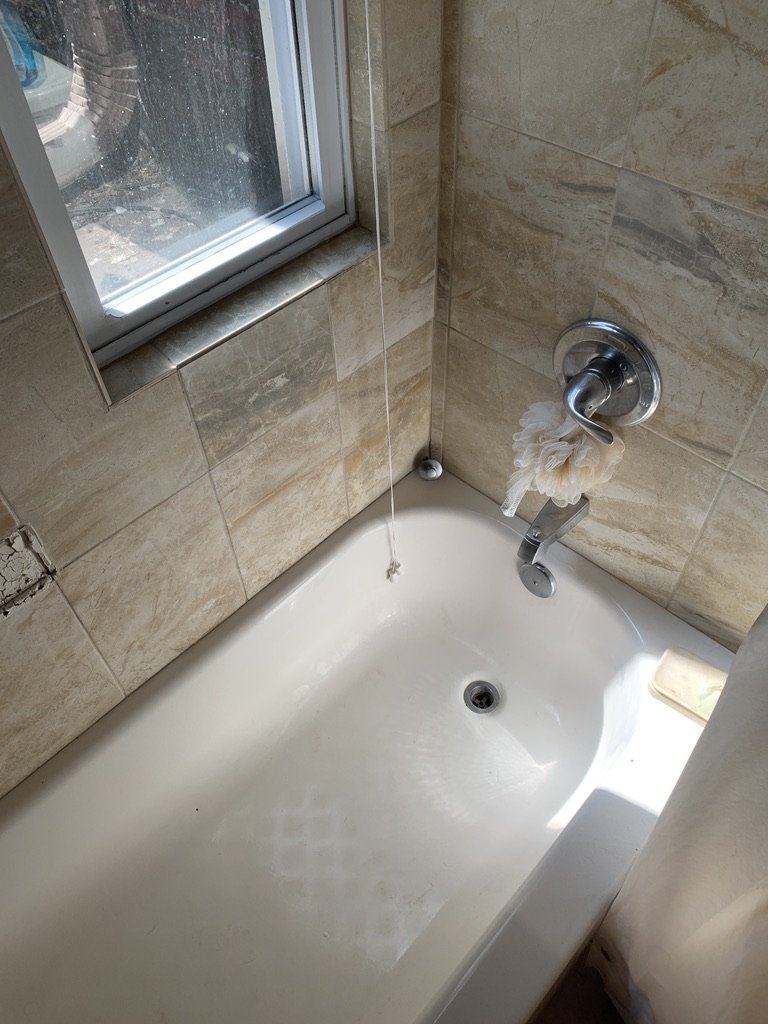Prana and the Bathtub: Systems Thinking for the Ashtanga Practitioner
I start almost every morning with a brief meditation in a hot bath. Weird, I guess, but I look forward to it. As I use the marvel of modern engineering to help in my self care routine, I can’t help but appreciate its existence as an analogy for our personal energy reserves, often called prana is esoteric circles.
Navigating the intricate balance of prana, our vital life force, can often feel like managing the water level in that marvel, the bathtub—always fluctuating, sometimes draining faster than we can refill. As an Ashtanga practitioner, understanding how to maintain this delicate equilibrium is crucial. By applying systems thinking, we can approach our practice with mindfulness, ensuring that our prana flows steadily, nourishing both body and spirit, and helping us stay resilient through life’s inevitable ups and downs.
Part 1: Stocks and Flows (Understanding the Bathtub of Life)
Let’s talk about stocks and flows, which are fundamental concepts in both systems thinking and life. Think of a stock as anything that accumulates—your energy, your stress levels, your savings, or even your flexibility from consistent practice. A flow is what changes that stock—either filling it up or draining it. To illustrate this, let’s take a dip into the bathtub metaphor.
The Bathtub (Your System in Action)
Imagine your energy levels as the water in a bathtub. The water level represents your stock. If the tub is full, you’re brimming with energy and ready to tackle whatever the day throws at you. But if the water level is low, you’re running on fumes, prone to burnout, and every little thing—like traffic or a forgotten email—can set you off.
The Flows (Filling and Draining the Tub)
Now, think of the water flowing into the tub from the faucet as a flow. This is everything that adds to your energy stock: a restful night’s sleep, nourishing meals, joyful moments, and of course, your yoga practice. On the flip side, the drain represents the outflow—the things that deplete your energy stock: stress, overcommitment, lack of rest, and endless mental chatter.
The balance between these inflows and outflows determines your energy level. If the inflow (rest, nourishment, joy) is greater than the outflow (stress, exhaustion), the water level rises and your energy builds. But if the drain is wide open and the inflow isn’t enough to keep up, the water level drops, leaving you with that dreaded empty feeling.
Dynamic Equilibrium (Finding Your Flow)
Life is dynamic, so your bathtub is constantly fluctuating. Some days the inflows are strong, and you feel on top of the world. Other days, stress cranks the drain wide open, and suddenly the water level is lower than you’d like. The trick is to be aware of both the inflows and outflows, so you can adjust accordingly.
Here’s where the magic of practice comes in. Your daily Ashtanga routine is like a steady flow from the faucet. It consistently tops off your tub, building resilience and buffering against those unexpected drains—like the flat tire or the difficult conversation. But the key isn’t just turning on the faucet full blast; it’s also about recognizing when the drain is letting too much out. Sometimes, lessening the outflow (like saying no to that extra obligation) is just as effective as increasing the inflow.
The Lag Time: Why You Don’t See Changes Immediately
One of the trickiest parts about stocks and flows is the lag time. Imagine you turn the faucet on—start getting more rest, eating better, or sticking to your practice. You expect to feel better immediately, but the tub doesn’t fill up instantly. It takes time for those inflows to accumulate. Likewise, if you’ve been neglecting self-care, the tub won’t drain all at once. It’s a slow process, but one that eventually leads to noticeable change.
This lag time is why patience and consistency are so crucial. It’s also why a seemingly minor imbalance can suddenly feel overwhelming when you’re running on empty. Understanding these dynamics helps you be proactive rather than reactive, adjusting your flows before the well runs dry.
The Takeaway
The first time I came across the bathtub metaphor was in Donella Meadows’ systems thinking work, and it was such a simple, brilliant a-ha moment. It perfectly illustrates how our energy and well-being fluctuate over time. By being mindful of the inflows (the things that nourish and replenish you) and the outflows (the things that drain you), you can maintain a healthy balance. It’s not just about cranking up the faucet and pouring more in—it’s also about keeping an eye on the drain and patching any leaks. When you feel your energy dip, trust the process. Keep steadily filling that tub, and over time, you’ll build the resilience to handle whatever life throws your way.
Part 2: Prana in the Bathtub (Managing the Flow of Life Energy)
Let’s dive deeper into the bathtub metaphor, but this time, think of the water as prana—the vital life force that flows through you. It can get a bit woo-woo, sure, but from a less esoteric position, its a great way to imagine all of the different little resevoirs of attention and creation in our life. In yoga, prana is what keeps you alive, vibrant, and connected to your inner self. Just like water in a tub, your prana level—the stock—rises and falls depending on what’s happening in your life. Maybe its a visual, maybe its a very real force. Thats neither here nor there.
The Bathtub of Prana
Imagine your body and mind as a bathtub filled with prana. When the tub is full, you’re overflowing with energy, creativity, and resilience. You feel balanced, at peace, and ready to engage with the world around you. But when the water level is low, you’re drained, irritable, and prone to burnout.
The Inflows (Replenishing Prana)
The water pouring in from the faucet represents the inflow of prana. This inflow comes from practices that nourish you: deep, mindful breathing, a consistent Ashtanga practice, proper rest, nourishing food, and moments of joy and connection. Every time you do something that honors your body and spirit, you’re adding more prana to your bathtub.
The Outflows (Where the Prana Leaks)
But here’s the twist—this isn’t just any bathtub. Instead of one neat drain at the bottom, your tub has multiple tiny holes all over it. These holes represent the various ways in which prana can leak out of your system.
Stressful situations, negative thoughts, unhealthy habits, lack of sleep, poor diet, constant multitasking, and even unresolved emotions—all these act as leaks, draining your prana bit by bit. Each leak might be small on its own, but together, they can significantly lower the water level in your tub.
Overflowing Prana (The Ideal State)
Ideally, you want your tub to be so full of prana that it’s almost overflowing. When you’re brimming with prana, even if a few leaks open up, you’ve got enough reserve to handle it without feeling drained. This overflow represents not just survival, but thriving—having more than enough energy to live your best life, to practice deeply, and to give generously to others.
The Reality (Small Leaks, Big Impact)
However, the reality for many of us is that it’s not one big leak that drains our prana, but rather several small ones that gradually intensify. Maybe it’s the low-grade stress of daily commutes, the constant ping of notifications, unresolved tensions in relationships, or the sneaky habit of staying up just a little too late every night. These small leaks might seem insignificant on their own, but together, they add up, slowly but surely lowering the water level in your tub.
This is where the compounding effect of stress becomes dangerous. You might not notice the prana draining away at first, but over time, those tiny leaks can leave you running on empty. That’s when you start to feel the burnout, the irritability, the inability to cope with what would normally be minor annoyances.
The Practice: Plugging the Leaks
The beauty of a regular Ashtanga practice is that it not only adds prana to your system but also helps you identify and address these leaks. Through mindfulness and self-awareness, you start to notice where your prana is slipping away—whether it’s through negative thought patterns, unhealthy habits, or external stressors. Your practice becomes both a way to refill the tub and a means to patch up those leaks.
Sometimes, plugging the leaks might mean making small adjustments—like setting boundaries to reduce stress, prioritizing sleep, or taking time for self-care. Other times, it might involve deeper work, like resolving long-standing emotional issues or changing lifestyle habits that no longer serve you.
The Takeaway
Your prana is precious, and like water in a bathtub, it’s constantly being replenished and drained. To live fully and vibrantly, it’s not just about turning on the faucet and pouring in more prana—it’s also about recognizing and addressing the myriad small leaks that can gradually drain your energy. By being mindful of both the inflows and outflows of prana, and making conscious choices to nourish yourself and minimize unnecessary drains, you can keep your prana tub full and overflowing, ready to meet life’s challenges with grace and resilience.
In our last reflection, we explored how prana, the vital life force, is like water in a bathtub—constantly flowing in and out, needing careful balance to keep us thriving. But here’s the thing: none of us want to spend our days in perpetual crisis management, frantically plugging leaks like the little Dutch boy at the dam. That’s not what practice is about. It’s not about being on high alert, constantly managing the chaos. Instead, we aim to cultivate a more natural, balanced relationship with the flow of prana—much like the Indigenous wisdom Tyson Yunkaporta describes in Sand Talk, where water is seen not merely as a resource to control but as a living, sacred element intimately connected to everything else.
Yunkaporta reminds us that water, like prana, is a partner in a reciprocal relationship. It isn’t a problem to be solved but a force to be respected, understood, and harmonized with. When we approach prana in this way, our practice becomes less about managing emergencies and more about nurturing a sustainable, symbiotic flow—one where we and the energy are in mutual care, constantly supporting each other. This shift from control to relationship is at the heart of moving from crisis management to a life of deeper balance and connection.
Part 3: Beyond Crisis Management: Flow as a Natural Cycle
In the wisdom traditions of many Indigenous cultures, water isn’t something to be fought against or tamed; it’s a living force that’s intertwined with all aspects of life. The water flow is only a problem when it’s out of balance—when there’s too much or too little. Otherwise, it’s a beautiful, harmonious relationship: the water cares for you as you care for it. There’s no sense of emergency, no need to force control. It’s a relationship of mutual respect, where balance is maintained through attention and presence, not through endless firefighting.
Moving from Emergency to Relationship
As practitioners, this is exactly what we seek. We don’t want to be constantly reacting to crisis—running out of prana, desperately trying to refill, only to drain it again. That’s exhausting, unsustainable, and, frankly, not what the practice is about. Instead, we want to cultivate a relationship with prana that is more symbiotic, where we and the energy flow are in harmony. It’s about being tuned in, knowing when to turn up the inflow, and recognizing when the outflows need attention—not out of panic, but out of care.
When the prana is flowing in balance, it supports you, just as you support it. Your practice isn’t about crisis management; it’s about cultivating a sustainable, nourishing relationship with your life force. You’re not constantly bailing water out of a sinking ship—you’re tending to the natural ebb and flow, ensuring that prana moves through you in a way that supports life, vitality, and peace.
The Art of Flowing with Prana
In this relationship, the flow of prana becomes a natural cycle, much like the rise and fall of rivers. When you’re tuned in, you understand that the flow isn’t something to control, but something to be in relationship with. Too much prana, and you might feel agitated, restless, or ungrounded. Too little, and you’re sluggish, burnt out, and reactive. But when it’s just right, everything feels in sync. Your practice aligns with your needs, nourishing you as much as you nourish it.
This isn’t about maintaining perfect equilibrium—life is dynamic, and the flow will naturally rise and fall. The key is being present enough to notice when the flow shifts and wise enough to adjust your actions accordingly. This kind of trust in the natural rhythms of prana mirrors Indigenous wisdom that teaches us to see water (or prana) not as a problem to solve but as a life-sustaining relationship to nurture. By embracing this mindset, we shift from crisis management to a more graceful, relational way of being—an approach explored in the article “Watershed Urbanism and Indigenous Ecological Design in Honolulu” in Places Journal.
The Takeaway: Practice as a Relationship, Not a Reaction
Ultimately, your practice becomes less about frantically managing prana leaks and more about living in conscious relationship with your energy. Like a river that flows through and nourishes the land, prana flows through you, shaping your experiences, your thoughts, and your actions. By respecting this flow, tending to it with care rather than fear, you create a sustainable, vibrant, and deeply nourishing life. The key is not to avoid the ups and downs but to embrace them as part of the natural cycle, trusting that with awareness and attention, you can maintain a healthy, balanced relationship with your prana.
The goal isn’t to be constantly on guard, waiting for the next leak to spring up—it’s to be in partnership with prana, allowing it to flow naturally and supportively through every aspect of your life. Your practice, then, isn’t an emergency response system; it’s a way of nurturing the flow of life itself.









